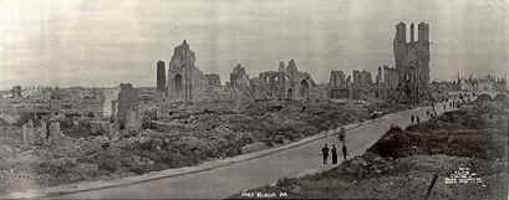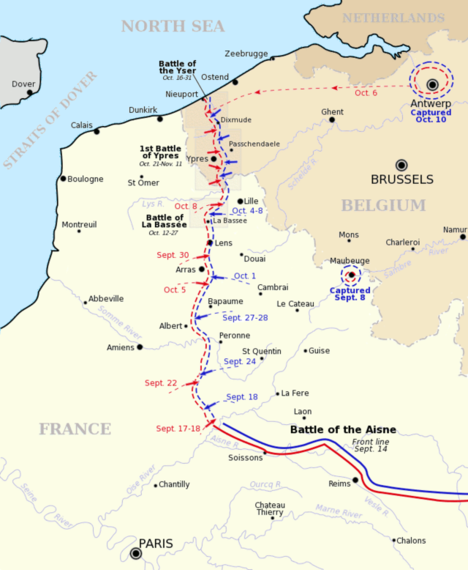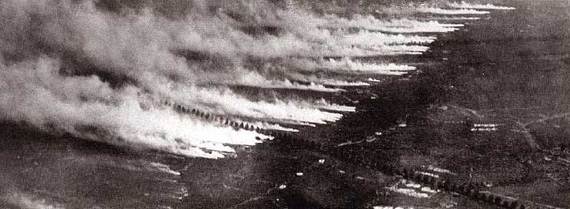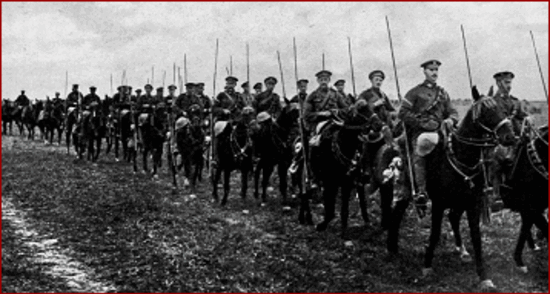Ypres November 1914
The First Battle of Ypres
Following their defeat at the first battle of the Marne, the German armies withdrew 40 miles to a point north of the Aisne River, where they dug in. Now began the so-called "Race for the Sea." Each of the opposing forces attempted to outflank the other by extending their trench systems. A series of inconclusive battles failed to dislodge either side. The final battle in the race to the sea occurred between the small Belgian town of Ypres and the English Channel.
This would be the first of three battles that would be fought here over the course of the war. This area was particularly important to the British who needed to protect, from possible attack, their supply lines from the channel ports. The German objective was to outflank the Allied line and attempt to surround the Allied positions. The result was a bitter battle around Ypres starting on October 9. The fighting would continue for two months. It was the first of many such meat-grinder engagements on the Western Front. It was to cost the British Expeditionary Force dearly.
Ypres would also go down in history as the site when poison gas was first used on the western front. Poison gas had already been used on the Eastern Front on January 2, 1915. On April 22, 1915, during the Second Battle of Ypres, German forces released 168 tons of Chlorine gas from 5,730 cylinders. Each 70 pound cylinder had been carried to the front line by German soldiers and simultaneously released. This was the first of four gas attacks that would be launched during the second battle of Ypres. In July 1917, Ypres was also the site where mustard gas, an even deadlier poison gas characterized by a yellow color, was first deployed on the western front.
General Ferdinand Foch commanded the Northern Group of armies and the senior British officer was General Sir John French. It was the last battle on the Western Front where the British cavalry was in action and they were badly mauled by accurate German artillery.
After a series of offensives and counter-offensives, the last great German assault came in mid-October, but it was called off too early, allowing the Allies to regroup and hold their position. The battle finally ended on November 22. Enormous numbers of casualties were suffered on both sides at Ypres: up to 85,000 French killed, wounded or missing; more than 21,000 Belgians; perhaps as many as 55,000 British; and more than 134,000 Germans. The result was the end of the British regular army. Of the regular battalion units that had landed in France in August, on average there remained just one officer out of 30 and 30 men out of 1,000 still fit for service. The losses in the BEF were replaced by reserves and, eventually, the masses of a newly enlisted army.
The Battle of Ypres marked the end of mobile warfare on the Western Front By the end of November 1914 both sides were at a stalemate. The lines of trenches on the Western Front now extended some 200 miles; from Nieuwpoort, Belgium on the North Sea to the French-Swiss border in the south. To the east of that line, Germany was now occupying territory that accounted for nearly two-thirds of France's iron production, a quarter of its steel manufacturing and nearly half of its coal mining capacity.
The first phase of the war had ended. The German drive to knock France out of the war had failed. The Schlieffen plan lay in tatters. The Allied attempts to halt the German advance, from the Battles of the Marne to Ypres, had succeeded but at an enormous cost in men and materials. During the first five months of the war the French army had lost 955,000 men, while German losses were just short of 900,000. The original British detachment of 80,000 men in the British Expeditionary Force had been virtually wiped out.
If this was victory it seemed little different than defeat. Neither side had imagined the horrendous losses that they had already suffered. Now locked into a 200-mile stalemate of trench warfare neither side could even begin to imagine the new horrors that still lay ahead. No progress would be made and mobile warfare would not be seen again on the Western Front until 1918.




